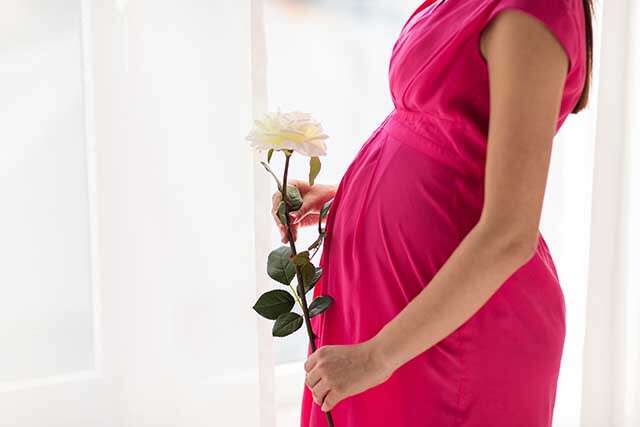
A comparison on international substitute mom law.
Have you noticed that the White House’s 2022 fiscal year budget replaced the word mothers with birthing people in a section about public health funding? That resulted in a flurry of criticism and mockery from conservatives to Democrats and President Biden. Snopes was joking about Mother’s Day could cease to exist and replace with Birthing People’s Day. While many Democrats are pushing for language that is inclusive of transgender and gender-nonconforming people who also give birth, substitute mom has been an inclusive solution for everyone who wants to be a parent through In-vitro fertilization (IVF). The regulations in different countries and regions may vary.
Table of Contents
Global Supply Chain of In Vitro Fertilization
IVF has proven itself a viable therapeutic option for various infertile conditions. In vitro fertilization (IVF) is a fertility treatment that helps infertile couples get pregnant. IVF allows women to conceive using their eggs, eggs, plus sperm from a partner or sperm donated by a sperm donor. Due to the high cost of IVF, most individuals attempt alternative methods first. IVF is the sole choice for those who want to be parents if all other therapies fail.
Furthermore, the changing lifestyle in urban regions and the increasing age of parenting are predicted to drive market expansion. Despite the positive factors, the high cost of assisted reproductive technologies (ART) may limit the worldwide in-vitro fertilization market. The worldwide in-vitro fertilization market has been divided into four segments: product, type, end-user, and geography. The market is divided into devices and reagents depending on the product. Imaging systems, sperm separation systems, ovum aspiration pumps, ecosystems, and micromanipulators are the devices segment’s subcategories. Embryo culture medium, cryopreservation media, sperm processing media, and ovum processing media are the different types of reagents available. IUI, in-vitro fertilization (IVF), intracytoplasmic sperm injection (ICSI), and IVF utilizing donor eggs are the different types of IVF. Fertility clinics, hospitals, clinical research institutions, and others are among the end-users in the market.
The following regions are represented in our in-vitro fertilization market report (click here to review the international female donor law comparison):
- North America (the United States, Canada, and Mexico)
- Europe (Germany, UK, France, Italy, Russia, and Turkey.)
- Southeast Asia (China, Japan, Korea, India, Australia, Indonesia, Thailand, Philippines, Malaysia, and Vietnam)
- South America (Brazil, Argentina, Columbia, etc.)
- The Middle East and Africa are two of the most important regions in the world (Saudi Arabia, UAE, Egypt, Nigeria, and South Africa)
International IVF Substitute Mom Law Comparison
United States
Using “in vitro fertilization,” it is now possible to gather eggs from the mother (or an egg donor), fertilize these with sperm from the father (or a sperm donor), and transfer the embryo into the uterus of a gestational carrier (IVF).
In the United States, gestational surrogacy is less straightforward legally. This is the situation because the infant has genetic ties to both intended parents. As a result, gestational surrogacy is becoming more prevalent than traditional surrogacy. Every year, around 750 children are born through gestational surrogacy.
China
Surrogacy is illegal in China in any form. However, the regulation on the subject is still restricted, according to Article 3 of the Chinese Administrative Measures on Human Assisted Reproductive Technology, published and adopted in 2001.
Only medical institutions are subject to the Measures, and consequences are restricted to fines or disciplinary action. However, no laws or departmental norms still control both parties engaged in surrogacy, leaving a gray area. Some people, for example, may seek surrogacy services in other countries where the practice is permitted, according to observers.
Southeast Asia
In Asia, third-party reproduction is a very different story. Many Asian countries’ legislation is still founded on traditional values. As a result, surrogacy in China, Taiwan, Japan, South Korea, and other Asian nations is still illegal. Instead, Asian couples and people interested in becoming parents through surrogacy must opt to do it in a nation other than their own.
Many Asian societies, notably China, Hong Kong, and Taiwan, significantly emphasize children. Having children and starting a family is highly promoted in some nations, contributing to a greater acceptance of surrogacy. Unfortunately, for some, the law arrived too late. Many people who had always wanted a second child discovered that their fertility had been impaired by their age and couldn’t conceive. As a result, worldwide third-party assisted reproduction was their sole option for producing two children.
Cost Comparison and Analysis
The cost of an IVF treatment utilizing a patient’s eggs varies widely by country, ranging from €2,500 in the cheapest destinations like India to €4,500 on average in Europe and up to €15,000 in the United States. Even more expensive are egg donation programs, which cost roughly €3,500 in India, €6,000 in Europe, and up to €30,000 in the United States.
Many people choose IVF therapy in another country because of reduced treatment expenses. Others seek treatment outside of their own country due to a lack of access to treatments or techniques in their home country. Whatever your motivation, you’ll want to know how much IVF will cost you, how much IVF costs throughout the world, and the financial disparities between nations. Patients invariably have no idea what to anticipate in terms of pricing in various nations, and stated prices can fluctuate significantly from real treatment costs.
In Europe, the cost of IVF therapy varies from nation to country. Eastern Europe has the lowest treatments, ranging from €2,500 to €3,500 for treating your eggs in countries like the Czech Republic and Poland. If you want to do IVF using donor eggs in the Czech Republic, you may expect to pay between €4,200 and €5,000. Ukraine and Russia are somewhat more costly, with their egg procedures beginning at €3,500 and donor egg IVF costing €5,000 in Ukraine.
Cyprus and Greece are also popular options, with prices ranging from €3,500 to €4,000 for own egg therapy and €5,500 to €6,000 for donor egg treatment, respectively. Spain is the costliest location in Europe, with its egg treatment costing on average €4,500 and donor egg treatment costing on average €6,500. Despite this, Spain remains one of the most popular destinations for IVF treatment, with one of the primary reasons being the wide availability of eggs from donors of all ethnicities.
In in vitro fertilization (IVF), finding information is critical for women and families who want to start a family as soon as possible. If you want to improve your chances of conceiving with IVF, don’t be disheartened by poor results or setbacks—you’re doing everything properly. The most important thing to remember is that most (if not all) of this is outside your control. Nobody likes losing control yet letting go may sometimes make the trip easier to bear. Take care of yourself, and don’t put the responsibility on yourself if things don’t go according to plan. It takes a village to raise a family, so you’re not alone.
REFERENCES:
https://tp.amegroups.com/article/view/3545/4408
https://www.familysourceconsultants.com/family-source-consultants-in-asia/
https://www.globaltimes.cn/page/202103/1216975.shtml
https://www.webmd.com/infertility-and-reproduction/guide/using-surrogate-mother


72 thoughts on “International IVF Substitute Mom Law Comparison: Is it guilty or not guilty?”